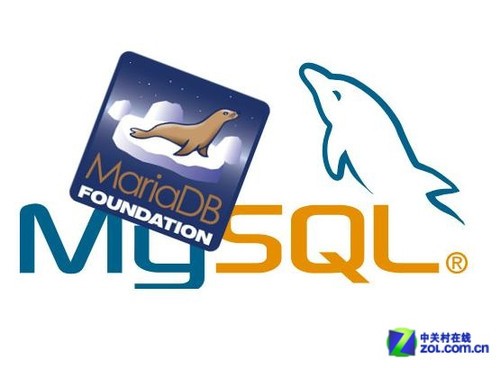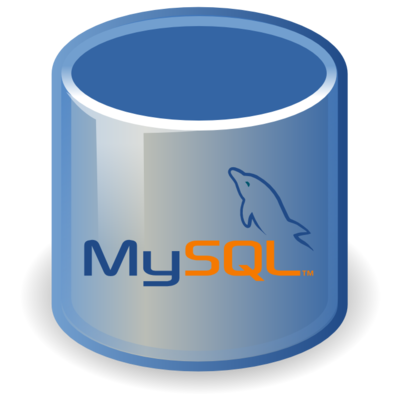Detailed tutorial on usage of inserting records
Inserting, browsing, modifying and deleting records in the data table can be completed using sql statements in the MySQL command line. The following describes how to execute basic SQL statements in the MySQL command line. 1. Insert records When establishing an empty database and data table, the first thing to consider is how to add total data to the data table. This operation can be completed using the insert statement. The syntax format is as follows: insert into data table name (column_name, column_name2,...) value (value1, value2,...) In MySQL, multiple rows of records can be inserted at the same time. The value list of each row of records is after the VALUES keyword. Separated by commas, standard SQL statements can only insert one row of records at a time. 2. Query database records To query data from the database, you must use the data query statement select. The select statement is the most commonly used query statement. Its use is somewhat complicated, but its function is powerful. The syntax format of the select statement is as follows: select selection_list
1. MySQL insertion and query statement operation (MYSQL statement operation tutorial 1)

Introduction: Inserting, browsing, modifying and deleting records in the data table can be completed using sql statements in the MySQL command line. Here is how to do it in the MySQL command line Execute basic SQL statements. 1. Insert records When establishing an empty database and data table, the first thing you need to consider is how to add total data to the data table. This operation can be completed using the insert statement. The syntax format is as follows:
2. Details of how mysql optimizes the speed of inserting records

Introduction: When inserting records, the main factors that affect the insertion speed are indexing, uniqueness verification, and the number of records inserted at one time. According to these situations, optimization can be performed separately. This section will introduce several methods to optimize the speed of inserting records. Let’s take a look with the editor below
3. SQL Server: Detailed explanation of triggers

Introduction: A trigger is a special stored procedure that cannot be called explicitly, but is automatically called when a record is inserted into the table, updated, or deleted. activation. So triggers can be used to implement complex integrity constraints on tables.
4. SQL Server trigger creation, deletion, modification, view

Introduction: A trigger is a special stored procedure that cannot be called explicitly, but is automatically activated when a record is inserted, updated, or deleted into the table. So triggers can be used to implement complex integrity constraints on tables.

Introduction: As shown in the figure , when the first two print_r have exit statements behind them, the data printed by print_r is normal. However, if you put exit after the sentence of inserting records (the sentence in the red box), some of the printed things will become null. Obviously, the above $_GET, and data are modified when executing the insert statement. But the printing is before the insert statement. The picture below is the print_r print after the exit statement is placed after the insert statement; ...
6. pcskys_windows7loader A new PDO transaction instance of a PDO-based database operation class
Introduction: pcskys_windows7loader: pcskys_windows7loader A new PDO transaction instance based on PDO database operation class: copy the code code as follows:
7 in one method. identity_insert Detailed explanation of PHP insert syntax
Introduction: identity_insert: Detailed explanation of identity_insert PHP insert syntax: There was such a sentence in the last program: $exec="insert into info (ename,pcname) values ('".$_POST["ename"]."','".$_POST[" pcname"]."')"; Explain the meaning of this sentence. The syntax for inserting records in SQL is: insert into table name (field name 1, field name 2, ...) values ("value of field 1", "value of field 2"
8. PHP gets the Mysql insert record ID
Introduction: PHP gets the Mysql insert record ID
9. PHP insert syntax detailed explanation_PHP tutorial
Introduction: PHP insert syntax detailed explanation There is such a sentence in the last program: $exec="insertintoinfo(ename,pcname) values('".$_POST["ename"]."','".$_POST["pcname"]."')"; Explain the meaning of this sentence. SQL syntax for inserting records
10. php+odbc+access database operation function, passed the test under windows_PHP tutorial
##Introduction: php+odbc+ The access database operation function passed the test under Windows. I downloaded adodb a few days ago and wanted to use adodb to connect to the access database. Later, I was able to connect, but I couldn't update or insert records. I don't know why no one has given it to me yet. Answer that troubled question
[Related Q&A recommendations]:
The best solution for table structure design of PHP site messages
php - How to get the value of the auto-increment item of a new record?
java - jdbc Chinese garbled code
python When inserting records into sqlite, the judgment of whether records exist does not work
mysql - How to use php transaction processing for Alipay timely payment
The above is the detailed content of Detailed tutorial on usage of inserting records. For more information, please follow other related articles on the PHP Chinese website!

Hot AI Tools

Undresser.AI Undress
AI-powered app for creating realistic nude photos

AI Clothes Remover
Online AI tool for removing clothes from photos.

Undress AI Tool
Undress images for free

Clothoff.io
AI clothes remover

AI Hentai Generator
Generate AI Hentai for free.

Hot Article

Hot Tools

Notepad++7.3.1
Easy-to-use and free code editor

SublimeText3 Chinese version
Chinese version, very easy to use

Zend Studio 13.0.1
Powerful PHP integrated development environment

Dreamweaver CS6
Visual web development tools

SublimeText3 Mac version
God-level code editing software (SublimeText3)

Hot Topics
 How do you alter a table in MySQL using the ALTER TABLE statement?
Mar 19, 2025 pm 03:51 PM
How do you alter a table in MySQL using the ALTER TABLE statement?
Mar 19, 2025 pm 03:51 PM
The article discusses using MySQL's ALTER TABLE statement to modify tables, including adding/dropping columns, renaming tables/columns, and changing column data types.
 How do I configure SSL/TLS encryption for MySQL connections?
Mar 18, 2025 pm 12:01 PM
How do I configure SSL/TLS encryption for MySQL connections?
Mar 18, 2025 pm 12:01 PM
Article discusses configuring SSL/TLS encryption for MySQL, including certificate generation and verification. Main issue is using self-signed certificates' security implications.[Character count: 159]
 How do you handle large datasets in MySQL?
Mar 21, 2025 pm 12:15 PM
How do you handle large datasets in MySQL?
Mar 21, 2025 pm 12:15 PM
Article discusses strategies for handling large datasets in MySQL, including partitioning, sharding, indexing, and query optimization.
 What are some popular MySQL GUI tools (e.g., MySQL Workbench, phpMyAdmin)?
Mar 21, 2025 pm 06:28 PM
What are some popular MySQL GUI tools (e.g., MySQL Workbench, phpMyAdmin)?
Mar 21, 2025 pm 06:28 PM
Article discusses popular MySQL GUI tools like MySQL Workbench and phpMyAdmin, comparing their features and suitability for beginners and advanced users.[159 characters]
 How do you drop a table in MySQL using the DROP TABLE statement?
Mar 19, 2025 pm 03:52 PM
How do you drop a table in MySQL using the DROP TABLE statement?
Mar 19, 2025 pm 03:52 PM
The article discusses dropping tables in MySQL using the DROP TABLE statement, emphasizing precautions and risks. It highlights that the action is irreversible without backups, detailing recovery methods and potential production environment hazards.
 How do you represent relationships using foreign keys?
Mar 19, 2025 pm 03:48 PM
How do you represent relationships using foreign keys?
Mar 19, 2025 pm 03:48 PM
Article discusses using foreign keys to represent relationships in databases, focusing on best practices, data integrity, and common pitfalls to avoid.
 How do you create indexes on JSON columns?
Mar 21, 2025 pm 12:13 PM
How do you create indexes on JSON columns?
Mar 21, 2025 pm 12:13 PM
The article discusses creating indexes on JSON columns in various databases like PostgreSQL, MySQL, and MongoDB to enhance query performance. It explains the syntax and benefits of indexing specific JSON paths, and lists supported database systems.
 How do I secure MySQL against common vulnerabilities (SQL injection, brute-force attacks)?
Mar 18, 2025 pm 12:00 PM
How do I secure MySQL against common vulnerabilities (SQL injection, brute-force attacks)?
Mar 18, 2025 pm 12:00 PM
Article discusses securing MySQL against SQL injection and brute-force attacks using prepared statements, input validation, and strong password policies.(159 characters)






